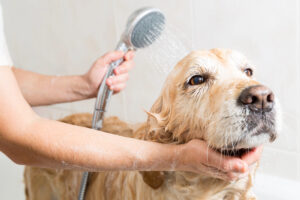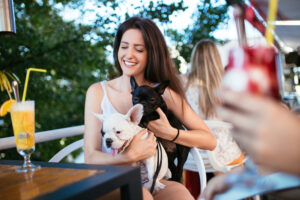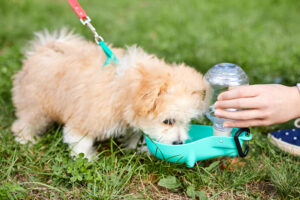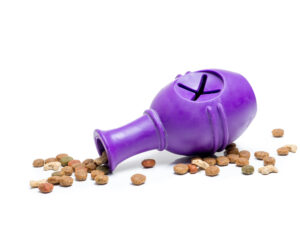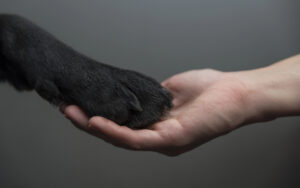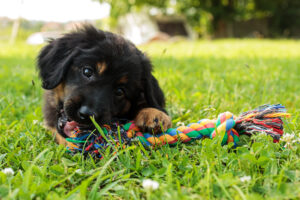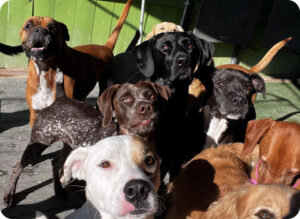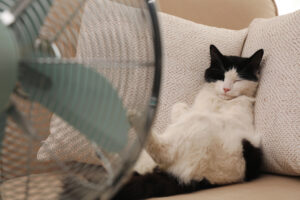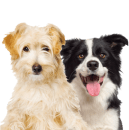
Indoor Exercises for Dogs When the Weather is Bad

Boarding Clients!*Discount does not apply during holiday/peak rate periods.

Guide on indoor exercises
No matter how bad the weather gets, your beloved pet still needs their daily dose of play and exercise. It is our belief at Fon Jon Pet Care that your dog needs regular indoor exercise and mental stimulation. If you want to keep your dog healthy and happy no matter the weather, here’s a more in-depth guide on indoor exercises.
1. Hide and Seek with Treats
Playing a game of treat-based hide-and-seek with your dog will stimulate his or her innate hunting instincts. Train your dog to find hidden treats by placing them in different areas of your house. Not only does it get them moving, but it also trains their noses to detect scents better. Hide the treats in unexpected places, like empty paper towel rolls, egg cartons, or cardboard boxes, to make your dog work for his reward.
2. Tug of War
Playing tug of war with your dog is a great way to exercise their muscles and give in to their natural inclination to play. To make sure it’s safe and enjoyable for both of you, use a strong rope or a tug toy that is suitable for dogs. Keep in mind that setting limits and rules is critical to maintaining order in this game.
3. Staircase Dash
If you have stairs in your house, you can use them to get a quick but effective workout. Incorporate stair running into your dog’s routine, whether it’s to chase a toy or simply for exercise purposes. Keep a tight eye on this exercise routine, particularly for older dogs or breeds known to have joint problems.
4. DIY Obstacle Course
Use common household items to build an obstacle course. Crawling under tables, navigating through chairs, or jumping over pillows are all examples of what could be considered this. It’s an imaginative approach to exercising your dog’s muscles and brain, and the course can be changed up to make it more exciting.
5. Interactive Toys and Puzzles
To keep your dog’s mind active and engaged, consider purchasing some of Nina Ottossen’s interactive toys and puzzles. Your dog will be entertained for hours as he or she learns to retrieve treats with these toys. A dog’s interest can be maintained by rotating these toys.
6. Training Sessions
Days spent indoors are ideal for practicing new tricks or reviewing old ones. Keep sessions light and enjoyable while using positive reinforcement. To maintain your dog’s cognitive stimulation, you can build on established behaviors, such as giving an old command a new spin.
7. Fetch in a Hallway
For a more manageable game of fetch, use a lengthy hallway. Without requiring a large amount of space, it’s an easy way to let your dog run and play.
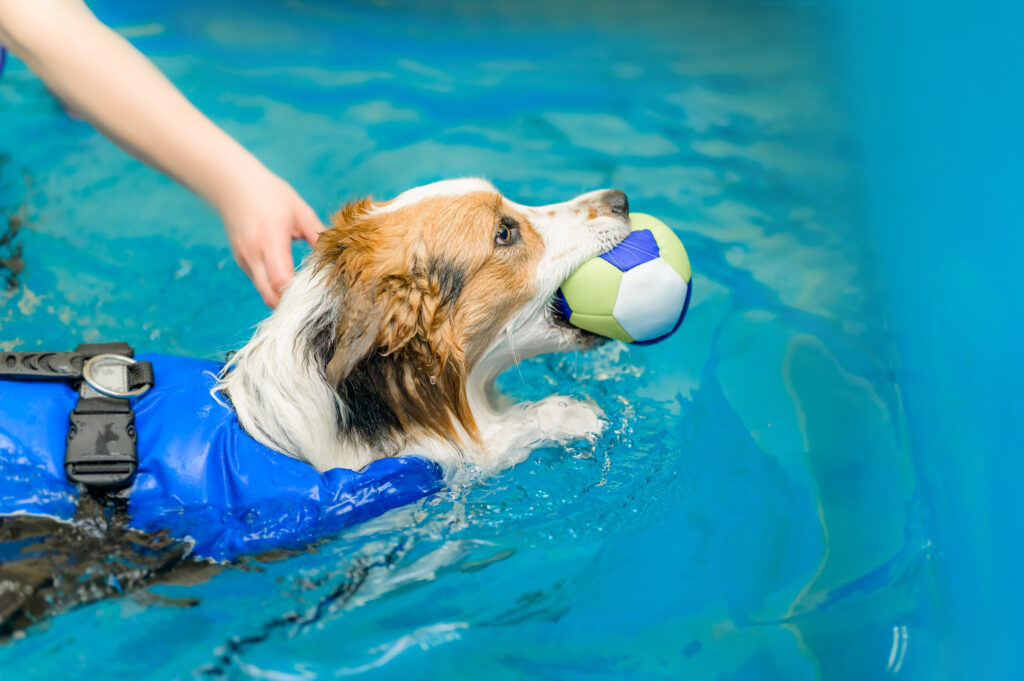
8. Balancing Exercises
Get your dog used to balancing on a flat, low surface. Doing so enhances both core strength and self-awareness. As your dog gains self-assurance, begin with easier activities and work your way up to more challenging ones.
9. Yoga with Your Dog (Doga)
A soothing and gentle form of exercise for you and your dog, yoga can be practiced together. You can strengthen your bond while giving your dog a little exercise by incorporating your canine into specific yoga poses.
10. Indoor Swimming
Swimming is a great form of exercise for dogs if you live in an area with an indoor pool that allows them. Even dogs with joint problems can benefit from this low-impact exercise because it improves their overall fitness.
11. Scent Games
Playing scent games is a great way to stimulate your dog’s nose. Beginning with “find-it” games is a good way to ease into more difficult activities, such as the shell game or advanced scent work. These games are great for your dog’s brain health and can be modified to fit his or her current level of ability.
12. Living Room Agility
Make a makeshift agility course out of your living room. Construct jumps, tunnels, and weaving poles out of common household items. Along with the health benefits of exercise, this will also help your dog learn new tricks.
13. Hide and Seek
Like a game of hide-and-seek with a kid, your dog and you can enjoy some quality time together. It’s a wonderful opportunity for bonding and playtime, and it’s also a fun way to exercise their body and mind.
Pro Tips for Indoor Dog Exercises
It takes some knowledge to make the most of your dog’s indoor workouts. If you want to make sure your indoor activities are safe and effective, here are some professional tips:
1. Understand Your Dog's Limits
Know Their Breed: When it comes to exercise, certain breeds have more stringent requirements. As an example, vigorous exercise might be too much for brachycephalic dogs like Bulldogs.
Consider Age and Health: Take into account your dog’s age and overall health when planning her activities. The ability and stamina of a dog will vary greatly depending on its age, health, and other factors.
2. Create a Routine
Consistency is Key: Consistency is key for dogs. Workouts should ideally be scheduled for the same time every day.
Balance Activities: Keeping things interesting and allowing yourself to work on various muscles and abilities requires a variety of activities.
3. Safety First
Space Check: Ensure the area is safe for exercise. Make sure there is a non-slip surface and get rid of any dangerous items.
Supervision: To make sure your dog is exercising safely indoors, you should always watch over them.
4. Use Positive Reinforcement
Rewards Work Wonders: Toys, praise, and treats can all serve as incentives. This will make exercise enjoyable for your dog and will also serve to motivate him.
Avoid Overfeeding: Watch the amount of treats you give your dog, particularly if he or she isn’t exercising as much as usual.
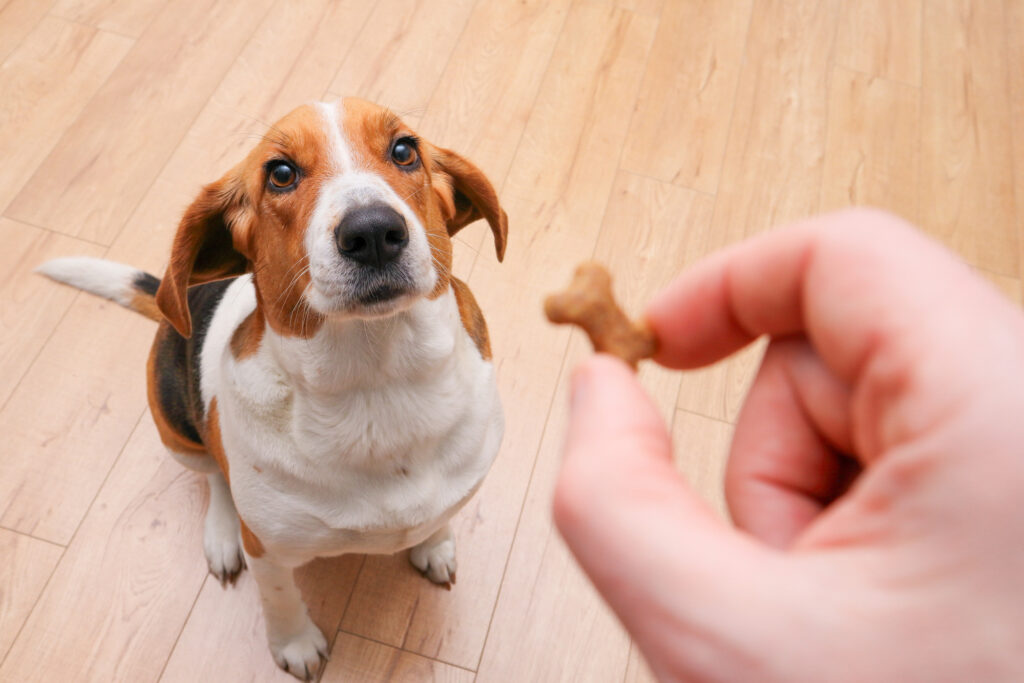
5. Mental Stimulation is Crucial
Brain Games: Keep in mind that working out your mind is just as vital as working out your body. Your dog’s intelligence can be enhanced with training challenges, puzzle toys, and scent games.
Change It Up: To maintain mental stimulation and engagement in your dog, it is recommended to regularly introduce new games and toys.
6. Monitor Exercise Intensity
Start Slow: Start with easier activities and work your way up to more challenging ones if your dog isn’t accustomed to exercising inside.
Watch for Signs of Fatigue: Indicators of fatigue or overexertion, such as shallow breathing or a decrease in speed, should be carefully observed.
7. Incorporate Training into Play
Combine Fun and Learning: Turn playtime into a learning experience. Make learning fun by teaching commands and tricks through games.
Short Sessions: To keep your dog interested and engaged during training, keep sessions brief and sweet.
8. Stay Engaged
Combine Fun and Learning: Turn playtime into a learning experience. Make learning fun by teaching commands and tricks through games.
Short Sessions: To keep your dog interested and engaged during training, keep sessions brief and sweet.
9. Health Check-Ups
Regular Vet Visits: Get your dog checked up often to make sure he or she is healthy enough to exercise.
Watch for Health Changes: Get your dog checked out by a vet if you see any changes in his or her health or behavior.
10. Hydration and Rest
Access to Water: Always provide fresh water during and after exercise.
Get Enough Sleep: Adequate Rest Ensure your dog has time to rest and recover, especially after intense activities.
If you follow these expert tips, you can make an indoor exercise program for your dog that is enjoyable, safe, and effective. You should modify these suggestions according to your pet’s individual requirements because every dog is different. Enjoy your workout!

Indoor Exercises for Dogs FAQ's
Q1: How much indoor exercise does my dog need daily?
Dogs of different ages, breeds, and health conditions require different amounts of exercise. On a daily basis, dogs should get between thirty minutes and two hours of exercise. Talk to your vet for personalized recommendations.
Q2: Can indoor exercises replace outdoor activities?
Indoor workouts have their benefits, but they shouldn’t supplant more active pursuits. Dogs thrive in natural settings because of the stimulation, variety, and fresh air they provide. As a supplement or short-term substitute, try exercising indoors.
Q3: Are indoor exercises suitable for all dog breeds?
Indeed, it is important to consider your dog’s breed, size, and health when determining the type and level of exercise they should receive. For instance, bigger breeds may require more strenuous activities, whereas smaller breeds may prefer shorter bursts of play.
Q4: How can I tell if my dog is getting enough exercise?
An appropriate exercise routine includes eating well, maintaining a healthy weight, getting enough sleep, and maintaining a peaceful attitude at home. A lack of exercise could be the cause of your dog’s destructive or agitated behavior.
Q5: What are some safe indoor exercises for senior dogs?
Gentle games of tug-of-war, slow games of fetch in a hallway, or easy training exercises are great for older dogs because they are not as taxing on their joints. Seek advice from your veterinarian before engaging in strenuous physical activity.
Q6: Can indoor exercises help with my dog's behavior issues?
Yes, common behavioral problems like digging, excessive barking, or chewing can be helped with regular exercise. They can put their energy and stress into something constructive.
Q7: How do I keep my dog motivated during indoor exercises?
Do a variety of enjoyable exercises. Praising, toys, and treats are great ways to motivate your dog. To maintain your dog’s interest, try introducing new games and tasks on a regular basis.
Q8: Are there specific toys recommended for indoor exercises?
The house is the perfect place for interactive playthings like chew toys, puzzle feeders, and toys that disperse treats. Make sure the toys aren’t too big or too tough for your dog to chew on.
Q9: How can I ensure the safety of my dog during indoor exercises?
Always keep an eye on your dog while they exercise, make sure the area is free of obstacles, and use a non-slip surface. Exercise your dog gently at first, and then work up to more challenging tasks as he or she becomes used to them.
Q10: Can I exercise my dog indoors if they're recovering from an injury?
Sure, but it’s best to check with your vet beforehand. In order to facilitate a safe recovery for your dog, they can advise you on particular low-impact exercises that are appropriate for his condition.




